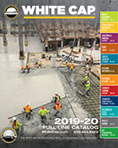Jobsite Defibrillators Can Save Lives
When Seconds Count
When workers suffer a cardiac arrest on a jobsite, their survival chances diminish by 7 – 10 percent for each minute there is no immediate CPR or defibrillation. If help is delayed for more than 10 minutes, a worker’s resuscitation rarely succeeds. Nearly 95 % of all cardiac arrest victims die. It’s a matter of timing.
Without the proper equipment and training, the affected worker must often wait more than 7 minutes for help in response to a 911 call. This time interval for aid increases to more than 14 minutes in rural settings. Even more disturbing is that researchers report nearly one in ten calls take up to 30 minutes for EMS personnel to arrive.
Have a Plan in Place
Developing a safety program that includes the first aid treatment for sudden cardiac arrest may not be obvious. Unlike other jobsite hazards, the potential for a cardiac arrest occurrence is hard to determine. Many victims have no prior history of heart disease and are stricken without warning. Even though OSHA does not have any legally-binding statutes governing the use or presence of defibrillators in the workplace, they do recommend contractors consider purchasing a defibrillator as part of their first-aid kit and training employees in their safety program. OSHA suggests that by adding this safety element, employers can significantly reduce workplace fatalities that result from sudden cardiac arrest – which accounts for about 13% of all fatalities.
What Can Cause Sudden Cardiac Arrest?
A sudden cardiac arrest is not always a heart attack. It’s a loss of pulse triggered by an electrical malfunction in the heart that causes an irregular heartbeat (arrhythmia). With its pumping action disrupted, the heart cannot pump blood to the brain, lungs and other organs. Within seconds, a person loses consciousness. Death occurs within minutes if the victim does not receive treatment.
Abnormal construction site conditions can contribute to the causes of sudden cardiac arrest. They could inadvertently be exposed to stray currents, or working in a confined space can pose a risk of asphyxiation. But the most common causes are overexertion and excessive heat conditions. These can especially affect workers who may have underlying heart disease.
![]() What Is An AED And How Can It Help?
What Is An AED And How Can It Help?
An AED is a medical device designed to analyze the heart rhythm and deliver an electric shock to victims to restore the heart rhythm to a normal range in a procedure called defibrillation. Contractors are urged to equip jobsites with automated external defibrillators (AEDs) to address this very serious time lag for immediate treatment when a sudden cardiac arrest occurs.
Adding an AED to a safety program is simple, but does require some special considerations.
CONTRACTORS SHOULD:
- Consult their company physician who can provide oversight on how the AED should be employed.
- Check on any compliance with local, state and federal regulations.
- Coordinate the use of AED’s with local EMS. In most cases, contractors invite their employees who are taking CPR training to attend an AED training certification class.
- Provide reporting and inspection procedures for AEDs.
![]() Where Should You Place An AED?
Where Should You Place An AED?
The key element is that AEDs should be conveniently located so that responders can bring unit to the victim within 3-5 minutes of the initial call. Other AED locations could include near where workers may be entering confined spaces, operating electric-powered devices, or working in outdoor worksites where lightning is used. If it’s difficult to identify any of these locations, the best location may be near a superintendent’s shed, where workers have been trained to anticipate eye wash stations and first kits. Make sure to inform your crew where the AED is located and post a sign for quick access.
What to do when Sudden Cardiac Arrest happens
According to the American Heart Association, cardiac arrest is reversible in most victims if it’s treated within a few minutes. Here are the steps that fellow workers should take when it happens.
If you are by yourself:
- Call 9-1-1 for emergency medical services.
- Secure an automated external defibrillator if one is available and use it as soon as it arrives.
- Begin CPR immediately and continue until professional emergency medical services arrive.
If two workers are available:
- One should begin CPR immediately while the other calls 9-1-1 and finds an AED.
![]()
Check out these links for more detailed information about AEDs.
https://www.osha.gov/SLTC/aed/aeds_workplace.html
https://www.osha.gov/SLTC/aed/aed_programs.html
https://www.redcross.org/take-a-class/aed/using-an-aed/what-is-aed
https://www.redcross.org/take-a-class/aed/aed-training/aed-classes

 What Is An AED And How Can It Help?
What Is An AED And How Can It Help? Where Should You Place An AED?
Where Should You Place An AED?


